On Organizing
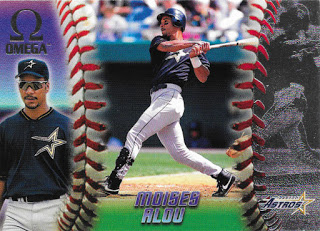 This has been popping through my head a lot recently, for several reasons. But a semi-recent epic Twitter thread featuring discussion with Nick Vossbrink (always good for a long thread), Tony, and some others led me to thinking about how I’ve organized my cards over time.
This has been popping through my head a lot recently, for several reasons. But a semi-recent epic Twitter thread featuring discussion with Nick Vossbrink (always good for a long thread), Tony, and some others led me to thinking about how I’ve organized my cards over time.
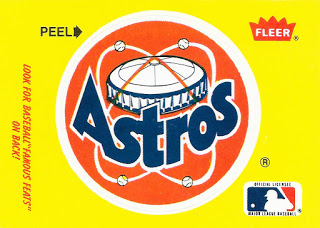 My first cards were gotten in the late 1980s, and stored in a pair of shoe boxes. My mom covered the box lids in paper, and I in turn covered the boxes with baseball stickers – mostly gotten from Fleer and eventually Upper Deck packs. I vividly remember one being a green Stride Rite box, with its white paper lid and sides all covered. The cards were separated by team, and bundled with rubber bands of course – some doubled or tripled to hold the cards real tight. I was 5-6 and condition was not a concern, after all. A few of my well-worn ’83 Topps still show the scars.
My first cards were gotten in the late 1980s, and stored in a pair of shoe boxes. My mom covered the box lids in paper, and I in turn covered the boxes with baseball stickers – mostly gotten from Fleer and eventually Upper Deck packs. I vividly remember one being a green Stride Rite box, with its white paper lid and sides all covered. The cards were separated by team, and bundled with rubber bands of course – some doubled or tripled to hold the cards real tight. I was 5-6 and condition was not a concern, after all. A few of my well-worn ’83 Topps still show the scars.
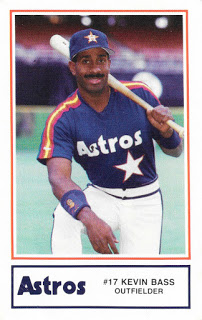 Eventually one box had grown into two boxes, and then I needed more storage. Such is collecting, after all. Around this time, my parents gave me a complete set of 1991 Topps for Christmas. I think at my birthday that year, I had gotten a “starter set” of baseball cards, a few pages, and a branded binder. Or perhaps it was ordered through one of those Scholastic book order catalogs at school. It may have even been the case that it was ordered that way, as a birthday present. Who knows at this point, that was 27 years ago.
Eventually one box had grown into two boxes, and then I needed more storage. Such is collecting, after all. Around this time, my parents gave me a complete set of 1991 Topps for Christmas. I think at my birthday that year, I had gotten a “starter set” of baseball cards, a few pages, and a branded binder. Or perhaps it was ordered through one of those Scholastic book order catalogs at school. It may have even been the case that it was ordered that way, as a birthday present. Who knows at this point, that was 27 years ago.
I do know that “starter kit” was from Impel, and included their 50-card 1991 Line Drive set. The binder was branded with a Line Drive logo, and there were pages for the cards. I believe this is the first card binder that entered my life.
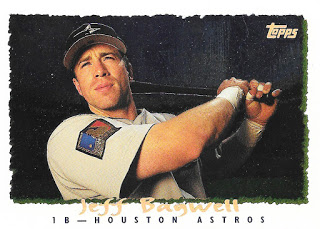 But what was I to do with the growing number of commons that I was acquiring? The team stacks couldn’t be contained in the shoe boxes anymore. They’d grown to the point where the rubber bands were bursting when I tried to bundle them. 800-count long boxes eventually found their way into my collection, and became a preferred method of storage.
But what was I to do with the growing number of commons that I was acquiring? The team stacks couldn’t be contained in the shoe boxes anymore. They’d grown to the point where the rubber bands were bursting when I tried to bundle them. 800-count long boxes eventually found their way into my collection, and became a preferred method of storage.
Sometime around 1994, my Bagwell collection was born. I mean, it was in progress before that, but as his cards started becoming more plentiful and checklists became easier to find online, I told my dad I wanted to start what we would now call a super collection. So Jeff got his own binder.
 Other binders became essential after that. Star players were worthy, after all, of special treatment. Fortunately for me, the local baseball card shop was a quick bike ride from my house. I was completely spoiled in this way, but it meant that cards – and the necessary supplies to store them – were readily available. An array of binders began to collect on my window seat. There was still not much organization to them other than each player got his own page, and when that collection eventually outgrew 18 cards, they graduated to another page. Players were bindered in alphabetical order. Guys like Will Clark, Mark McGwire, Barry Bonds, Bobby Bonilla, Andy Van Slyke, Orel Hershiser, Cal Ripken, and so on.
Other binders became essential after that. Star players were worthy, after all, of special treatment. Fortunately for me, the local baseball card shop was a quick bike ride from my house. I was completely spoiled in this way, but it meant that cards – and the necessary supplies to store them – were readily available. An array of binders began to collect on my window seat. There was still not much organization to them other than each player got his own page, and when that collection eventually outgrew 18 cards, they graduated to another page. Players were bindered in alphabetical order. Guys like Will Clark, Mark McGwire, Barry Bonds, Bobby Bonilla, Andy Van Slyke, Orel Hershiser, Cal Ripken, and so on.
The next big reorganization that happened was spurred by another shift in my collecting habits. As we went to more games, and I rediscovered TTM requests – including getting a Smalling book, autographs became a larger part of my collection. So I looked back at all my cards, and thought to myself, “I should organize these alphabetically by last name to make it faster and easier to pull them for autograph hunting.” I can still recall this task, as it was a huge shift in my organization of cards.
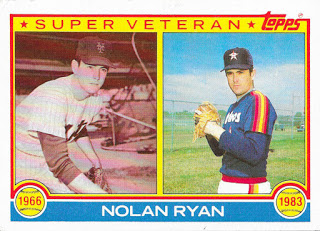 Since we were in Houston, and Astros were my primary goal, I had one 500-ish count box filled with cards of the current Astros roster, which I would sometimes drag to games. On other occasions, I would pull cards from it to put in a spiral notebook instead, which I would then take. I kept this faithfully updated, and watched the Transactions portion of the sports roundup in the paper dutifully.
Since we were in Houston, and Astros were my primary goal, I had one 500-ish count box filled with cards of the current Astros roster, which I would sometimes drag to games. On other occasions, I would pull cards from it to put in a spiral notebook instead, which I would then take. I kept this faithfully updated, and watched the Transactions portion of the sports roundup in the paper dutifully.
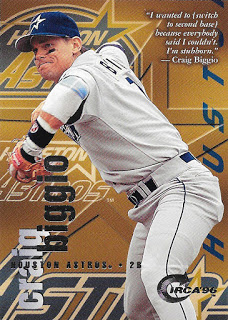 Some time around 1998, as my dad and I were planning our big baseball trip for the following year (blog entry to come someday) I picked up an old cigar box, and started filling it with cards of Hall of Famers. It was large enough to fit the postcards and photos I picked up as well, so it was perfect – for a time. It was fun too, but not really great for organization.
Some time around 1998, as my dad and I were planning our big baseball trip for the following year (blog entry to come someday) I picked up an old cigar box, and started filling it with cards of Hall of Famers. It was large enough to fit the postcards and photos I picked up as well, so it was perfect – for a time. It was fun too, but not really great for organization.
And then my cards sat there, neglected. Eventually, they were all moved into the closet or the window seat for storage. I was about to head off to college, and music had become my preferred way of blowing my hard-earned money. Life moved on, but my cards didn’t.
However, when we decided to move out of our rental and start saving for a house, we moved in with my folks for six months. We paid our share of the utilities, and let them use our HBO subscription, but otherwise we got to save a nice bit of money. While we were there, though, I rediscovered my cards. I found this blogging community. I came across TCDB and catalogued everything in my collection there while watching the Astros lose 100 games a year or during episodes of Master Chef Junior, or whatever.
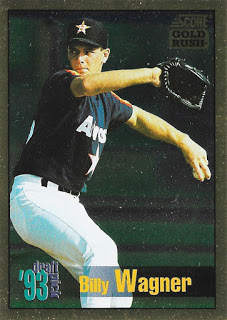 While entering all those cards, I figured I would start working on a full-fledged Astros collection. I gathered my Astros cards (apart from Jeff, who kept his own binder). I began to build wantlists. I pulled out the cards of some of the vintage guys I collect, and put them in another binder. The rest of the binders got emptied out, cards were put into boxes. I bought new cards for the first time in a decade. I started building some “old” sets from my childhood, and then that lost steam. Thanks to everyone who helped me build the 1989 set, by the way – it felt great to achieve that goal of finally hand-collating a set through trading.
While entering all those cards, I figured I would start working on a full-fledged Astros collection. I gathered my Astros cards (apart from Jeff, who kept his own binder). I began to build wantlists. I pulled out the cards of some of the vintage guys I collect, and put them in another binder. The rest of the binders got emptied out, cards were put into boxes. I bought new cards for the first time in a decade. I started building some “old” sets from my childhood, and then that lost steam. Thanks to everyone who helped me build the 1989 set, by the way – it felt great to achieve that goal of finally hand-collating a set through trading.
Now my priority is trading. So I’m reorganizing again. Sure, there are still plenty of areas where I am still collecting: there are a few vintage sets I’m building, and I’ve got a 5000 count box with HOFer and star cards to keep (it’s only about half full so far) There’s also a large box of cards for TTM hunting. And of course, there are binders for the Astros, the Bagwells, and the other PCs.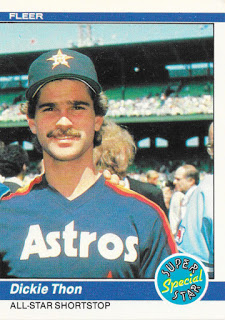
The hardest part of trading, though, is locating the cards for fellow traders. While an alphabetical organization was fine for pulling cards to take to the park for autographs, it’s not ideal when you’re trying to get as many unwanted cards out the door as possible. So I’ve spent portions of the last 6 months slowly re-organizing all my cards available for trade by year and then set. And I’m finally almost done with that – so let’s get some trading done!
I’ll close this in the Fuji way – how do you organize your cards, everyone? Leave a comment, or write a post. Either is fine by me.
*Note: all cards in this post came from the several boxes that were given to me by Trevor last year. Peppering them in here seemed better than just subjecting you all to a long and boring post about cards I got a year and a half ago. But, I will highlight some of the other cool ones in a couple upcoming posts.
Like you I've been trying to figure out the best way to store my trade bait cards. Fortunately I haven't got that many any longer that fit outside of my out limited collecting interests. Cards I plan on keeping are sorted by last name in alphabetical order. Cards I have no intention of keeping used to be sorted in alphabetical order but now are sorted by team since I've found that the majority of the people I deal with are team collectors. But inside of the teams… I couldn't tell you which players are in there… which means, actually, that maybe alphabetical order is actually better?
My trade bait is stored in 5000 count boxes. Since most of my trade partners usually want mostly a certain team, I've stuck with my childhood method of organizing by team; alphabetical by city, American League then National League. Within each team they are sorted by brand (Topps, Bowman, Donruss, etc.) And within each brand they're sorted by year. I stop there. I don't alphabetized by player or anything further. It took some time to sort further than just by team, but has been worth it. I can find any card in half a minute or less.
Well.. I keep my Jays and Expos in binders.. I need to get more binders.. I wish I could find another 5" binder.
I have my sets in 5000 count boxes, except the 1992 OPC set I bought.. I kept it in its own factory box.
My issue is keeping up on having everything entered into TCDB.. I've already blown up my trade list.. I'm thinking about doing the same with the collection list and start from scratch there..
For my Million Expos Project, I'm going to be cataloguing that via spreadsheet.
You have better recall on your storage/organization tendencies when you were a kid. I don't have that much detail (also your folks were much more into your hobby than mine were!). These days — and for a long time — most of my collection that is not tied up in sets is organized by set and then team. In most cases that makes easy-ish for finding cards for people. But it's a real pain for tracking cards for player collectors. … I've been pulling a lot of Astros lately. I should get those together for you, but I'm so behind.
After about two years, I blew everything up at TCDB as well. I shifted everything to the trade list and then started moving the stuff I wanted to keep back into my collection. Since about 80% of the cards are up for trade, that was faster for me.
Spreadsheet would certainly make sense for a project that large, although I'd be tempted to get reallllllly nerdy and go full DB.
See, at first I thought "oh, I've got a perfect setup to help player collectors!" And then I started trading more with team or set collectors, and pulling cards became tougher. With everything listed in TCDB, and the transaction manager there, I'm able to easily pull stuff for trades over there now. And for my pals who aren't on the site, I can easily reference it to determine what set or player needs I have for them.
Now I'm picturing you having an A–K album filled just with Kruk and an L–Z album just with Darryl.
Manual pingback to my post on this. https://njwv.wordpress.com/2018/07/31/on-organizing/